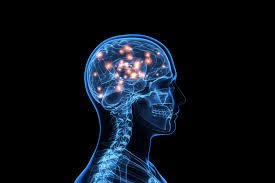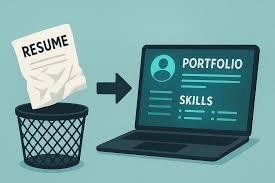
Your Brain on Learning: The Fastest Way to Master a New Skill for Your Resume
Your Brain on Learning: The Fastest Way to Master a New Skill for Your Resume
In today's fast-paced job market, the ability to rapidly acquire and demonstrate new skills isn't just a bonus—it's a requirement. Whether you need to master Python, learn a new CRM, or become proficient in data visualization, the clock is always ticking. The good news is that cognitive science and neuroscience have revealed exactly how the brain processes, stores, and retrieves information most efficiently.
The secret to mastering a new skill fast isn't pulling all-nighters; it's learning how your brain learns. By hacking your own cognitive hardware, you can drastically cut down the time it takes to add a valuable, marketable skill to your resume. This guide will walk you through the accelerated learning principles that will help you achieve rapid mastery.
1. The 20-Hour Rule: Intentional, Focused Practice
Forget the myth of the 10,000-hour rule for initial mastery. That figure applies to becoming a world-class expert. For the purpose of adding a job-ready skill to your resume, you need about 20 hours of focused, deliberate practice. This principle, popularized by author Josh Kaufman, is about optimizing those first critical hours.
Deconstruct the Skill
Before you start, break the skill down into its smallest, most essential components. If you're learning Python for data analysis, don't try to learn every library at once. Focus only on the 20% of the concepts (like Pandas dataframes and basic filtering) that will give you 80% of the marketable results. This allows your brain to tackle manageable chunks.
Pre-Commit and Eliminate Barriers
Remove distractions for those 20 hours. Silence your phone, close irrelevant tabs, and commit to short, focused sessions. Intense focus is the true accelerator. Learning in 90-minute, distraction-free blocks is exponentially more effective than four hours of fragmented, interrupted study.
2. The Power of "Doing": Project-Based Learning
Your brain doesn't learn from passively reading slides; it learns from active recall and practical application. This is the difference between knowing about a skill and possessing it.
Skip the Tutorial Trap
Many learners get stuck in "tutorial hell," endlessly watching videos or reading books without producing anything. Your brain only forms strong, lasting neural pathways when it has to retrieve and apply information under pressure.
Build a Tiny Project Right Away
Your learning should be 80% application, 20% theory.
-
The Resume Asset: Identify a small, real-world project you can build immediately. If you're learning a new design tool, create a mock landing page. If you're learning SQL, build a small local database and run five complex queries.
-
Embrace Productive Failure: You will get stuck, and that’s a good thing. The cognitive friction you experience when debugging code or fixing a design flaw forces your brain to solidify the underlying concepts. Struggle is a sign of learning.
3. Spaced Repetition and Interleaving: Outsmarting Forgetting
The brain rapidly forgets new information unless it's deliberately reinforced. This is where the scheduling of your practice becomes critical.
Spaced Repetition
Instead of cramming for six hours on Monday, spread those six hours out over the week. Spaced repetition exploits the "forgetting curve":
-
Review the new concept just before you are about to forget it (e.g., 1 hour, 1 day, 3 days, 1 week, 2 weeks). This forces your brain to repeatedly retrieve the memory, strengthening the neural connection each time. Use flashcard apps (like Anki) for factual recall, or dedicate a set time each day for quick concept reviews.
Interleaving
Don't master Topic A completely before moving to Topic B. Mix them up. If you are learning three different features of a software, practice them in the order A-B-C, then C-A-B, then B-C-A.
-
The Brain Hack: Interleaving forces your brain to differentiate between concepts and choose the right tool for the right problem. This builds flexible knowledge, which is what is tested in the real world, not just rote memorization.
4. The Sleep and Stress Factor: Biology’s Role
No amount of cognitive hacking will work if your brain is running on fumes. Learning is a biological process dependent on rest and emotional regulation.
Consolidation Through Sleep
During deep REM sleep, your brain actively reviews and consolidates the memories formed during the day. Learning a new skill is literally incomplete without sleep. Never trade a study session for less than seven hours of sleep; you’ll undo more than you accomplish.
Mitigate Stress
High levels of cortisol (the stress hormone) actively impair the hippocampus, the part of the brain crucial for forming new memories. If you are anxious about your job search, your learning will suffer. Incorporate short breaks, movement, and mindfulness—even 10 minutes of walking—to lower cortisol and optimize your brain's receptive state.
From Learning to Selling: The Final Step
Once you’ve invested your 20 focused hours, you’ve reached the level of competence—you can now perform the skill. The final step is translating that competence into a resume asset.
-
The Project Portfolio: Your little project from Step 2 becomes your proof. Instead of writing "Proficient in Python," write: "Developed a Python script using Pandas to analyze 500 records of customer data, identifying a 10% correlation between X and Y."
-
Speak the Language: Use the specific, technical terminology of the skill in your resume and interview answers. This signals that you are not just a beginner, but a genuine practitioner.
Mastering a new skill is not about natural genius; it’s about applied science. By respecting your brain’s need for focused practice, active application, strategic repetition, and essential rest, you can conquer any new skill faster and make yourself indispensable in the modern workforce.
FAQs on Accelerated Skill Acquisition
1. How do I choose which new skill to focus on?
Prioritize skills that meet three criteria: High Market Demand (what recruiters are searching for), High Transferability (skills useful in multiple roles/industries, e.g., SQL, Excel, communication), and High Personal Interest (something you genuinely enjoy, which aids motivation). Always check job descriptions for your target role to see the most frequently listed requirements.
2. Is it better to focus on one skill intensely or several skills simultaneously?
For accelerated initial mastery, focus intensely on one skill at a time until you reach the competence level (the 20-hour mark). Once you achieve competence, you can transition to interleaving (Step 3) by dedicating smaller, consistent blocks of time to maintain that skill while starting the next one. Intense focus first, followed by diversified maintenance.
3. How do I maintain a skill once I’ve learned it?
Maintenance relies on consistent, low-effort retrieval. Integrate the skill into your daily life or work. If you learned a new software, use it for personal projects. If you learned a language, try to read one article a week in that language. Failing to use a skill leads to the brain pruning the associated neural connections. Consistent light practice (5 minutes daily) is better than one heavy session per month.



